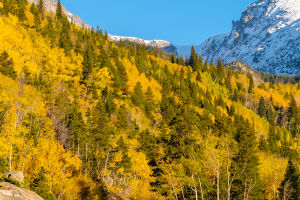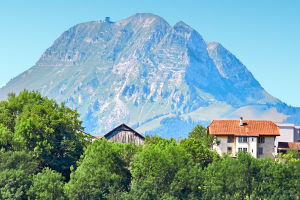Waterfalls are one of the most magnificent natural landscapes on earth. When you think of waterfalls, the first things that come to mind are surely the three most famous waterfalls in the world - Niagara Falls, Victoria Falls, and Iguazu Falls.
A waterfall is geologically called a plunge, which is the vertical fall of a river from a height as it flows through areas such as faults and depressions.
A waterfall is a temporary feature for the duration of a river's existence, and it eventually disappears. One of the most common reasons for the presence of waterfalls is the variation in rock types.
Rivers cross many lithological boundaries. If a river flows from a hard rocky bed to a softer rocky bed, the softer rocky bed is likely to erode more quickly and the gradient is steeper where the two rock types meet.
This occurs when the river changes direction and exposes the junction between the different rocky beds. A waterfall is an area where the flowing river falls suddenly and nearly vertically, and is the main obstruction in the flow of the river.
Niagara Falls, which forms part of the boundary between the United States and Canada, has a mottled dolomite roof rock in its bed, pressed against a series of softer shales and sandstones.
The Niagara River tumbles over the dolomite ledge and drops straight into a large pool below, where the tumbling, flowing water ceaselessly soaks away the shale, emptying the dolomite caverns and sending chunks of dolomite crumbling down, making the cliffs perpetually steep.
The world's widest waterfall is - Iguazu Falls. Iguazu Falls, located 23 kilometers upstream of the point where the Iguazu and Paraná rivers merge on the border between Argentina and Brazil, is a horseshoe-shaped waterfall, 82 meters high and 4 kilometers wide, with an average drop of 75 meters.
It was declared a UNESCO World Natural Heritage Site in 1984. The Iguazu Falls are located on both sides of the canyon, which divides Argentina from Brazil, and the views of the falls are very different in Argentina and Brazil.
On the Argentine side, there are two routes, the lower one winding through the dense forest, allowing you to see the magnificence or beauty of each section of the falls from the bottom up, and the upper one from the top down, where you can feel the power of the falls tumbling down.
From the Brazilian side, you can enjoy a panoramic view of the main waterfalls on the Argentine side.
The waterfalls are perhaps a miracle of God's creation, as they are usually situated in beautiful surroundings by the mountains and water.
Sunshine, blue skies, rainbows, and greenery all combine to make a waterfall of unparalleled beauty. There are countless waterfalls around the world, and they can be very impressive, with crystal-clear water and trees surrounding them, giving them a sense of seclusion and tranquillity.
In fact, many of the world's great waterfalls are on a distinctly 'backward' trend. Niagara Falls, for example, has a drop of about 50 meters today, and it is inferred from the rock formations that the previous location was downstream, where the drop could have been 100 meters.
The falls are now retreating upstream by more than one meter per year, and the drop is decreasing. At this rate, in another 50,000 years, Niagara Falls will disappear completely.
While all waterfalls die out, at the same time new ones are born over the long years. The earth's geological movements, which have caused mountains and plateaus to rise, and strata to fracture and dislocate, have created the conditions for the birth of new waterfalls.
Waterfalls, a beautiful and spectacular natural sight, will not disappear from the face of the earth.


